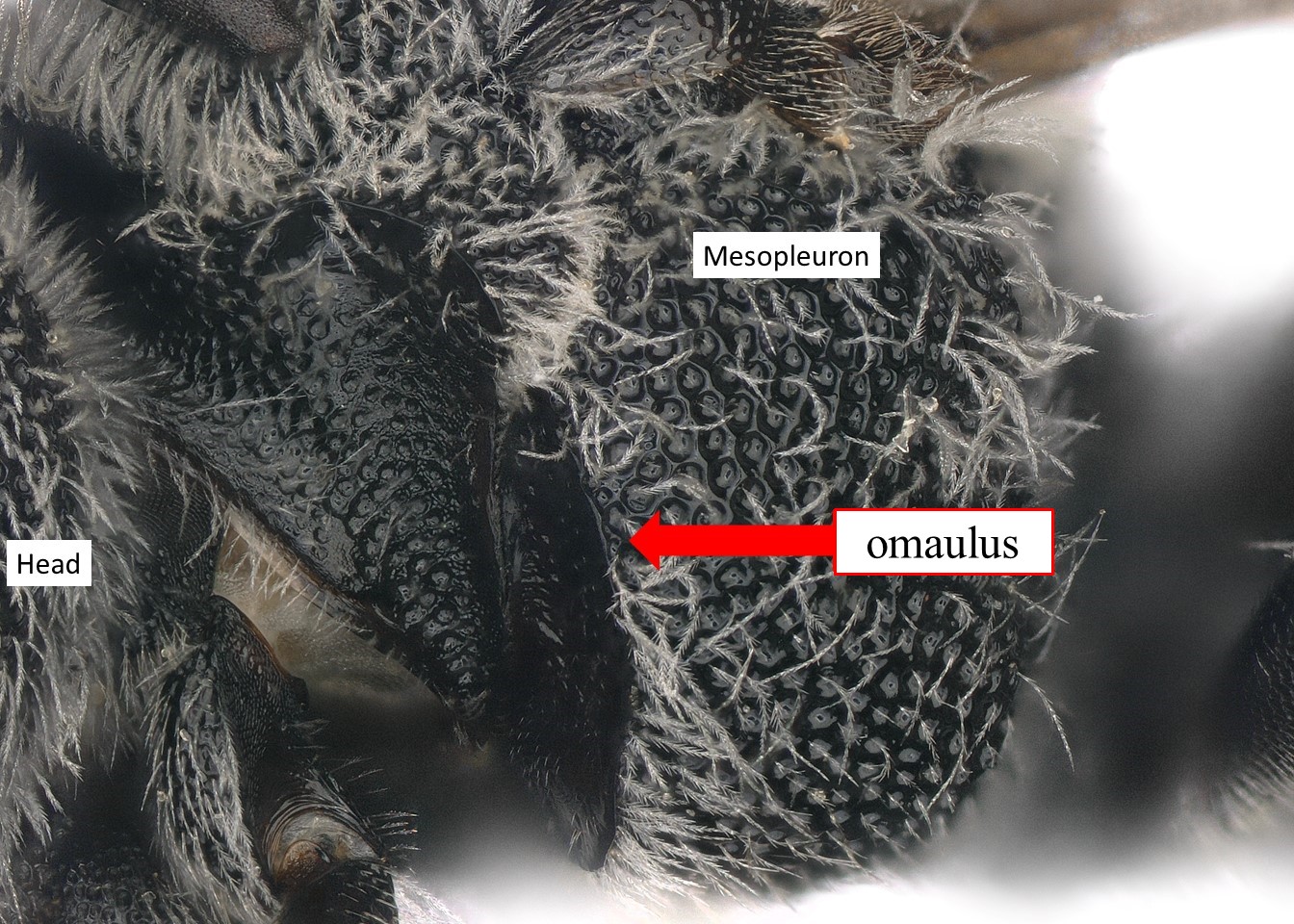Family: Megachilidae
Subfamily: Megachilinae
Tribe: Osmiini
Genus: Xeroheriades Griswold, 1986
Subgenera: none
Common name: none
Xeroheriades is a slender bee with dense white hairs on the thorax, a distinct rusty-red abdomen, and white hairs on the marginal bandsbands:
usually referring to bands of hair or bands of color that traverse across an abdominal segment
. They range in body length from 4.5–7 mm (Michener 2007Michener 2007:
Michener, C.D. 2007. The Bees of the World (2nd ed.). Johns Hopkins University Press, Baltimore and London, 953 pp.).
Xeroheriades contains one species, X. micheneri, which is restricted to the U.S. (Michener 2007Michener 2007:
Michener, C.D. 2007. The Bees of the World (2nd ed.). Johns Hopkins University Press, Baltimore and London, 953 pp.).
(modified from Griswold 1986bGriswold 1986b:
Griswold, T.L. 1986. A new heriadine bee from the Mojave Desert. The Southwestern Entomologist 11: 165ndash;169. unless otherwise stated)
 rounded.
rounded. 1–3 medially incurved.
1–3 medially incurved. with distinctive bilobed elongate process.
with distinctive bilobed elongate process. with raised preapicalpreapical:
with raised preapicalpreapical: with deep apicalapical:
with deep apicalapical:Both Heriades and Chelostoma have similar slim profiles to Xeroheriades, but neither of them possesses the reddish abdominal coloration of Xeroheriades (Griswold 1986bGriswold 1986b:
Griswold, T.L. 1986. A new heriadine bee from the Mojave Desert. The Southwestern Entomologist 11: 165ndash;169.), and both have simple sternasterna:
the plates on the underside of the abdomen, often abbreviated when referring to a specific segment to S1, S2, S3, S4, S5, S6, S7, or S8
 in the female without the modifications to S1S1:
in the female without the modifications to S1S1:
the plates on the underside of the abdomen, often abbreviated when referring to a specific segment to S1, S2, S3, S4, S5, S6, S7, or S8
 and S6S6:
and S6S6:
the plates on the underside of the abdomen, often abbreviated when referring to a specific segment to S1, S2, S3, S4, S5, S6, S7, or S8
 .
.
There are no known invasives.
Floral associations are unknown.
Xeroheriades micheneri is found in isolated mountainous areas of the eastern and southern Mojave Desert in southern California (Griswold 1986Griswold 1986:
Griswold, T. 1986. Notes on the nesting biology of Protosmia ( Chelostomopsis ) rubifloris (Cockerell) (Hymenoptera: Megachilidae). The Pan-Pacific Entomologist 62: 84ndash;87.; Michener 2007Michener 2007:
Michener, C.D. 2007. The Bees of the World (2nd ed.). Johns Hopkins University Press, Baltimore and London, 953 pp.).
Distribution map generated by Discover Life - click on map for details, credits, and terms of use.